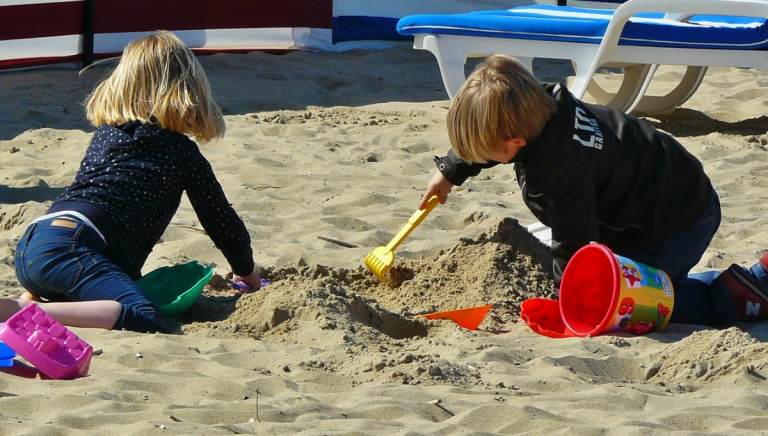For those of you who have experienced a close relationship with a child, be it as a parent, aunty/uncle, friend, or educator, you will know they are fascinating to watch when playing.
Watching my own boys grow up I noticed they went through different stages in how they interacted. Luckily for me, my teacher training helped me understand that things such as ‘sharing’ were linked to developmental stages, not just my willingness for peace! 😉
Childrens’ stages of play have been researched for many years. In fact, back in 1932, Mildred Parten Newhall’s research founded five stages of social interaction in relation to childrens’ play. These have since been extended to six levels. So let me explain.
Stage 1: Unoccupied play
0 – 12 months old.
Basically, random movements with no clear purpose.
Stage 2: Solitary play
0 – 2 years old.
Intent on doing their own thing. Unaware of others around them, and doesn’t interact with them
Stage 3: Onlooker/Spectator play
18 months – 2.5 years old.
They will watch others. They may ask some questions about what they are doing, but there is no attempt to join-in.
This may look like one child watching another playing and ask something like “What are you doing?”
Stage 4: Parallel play
2.5 – 3 years old.
They will play alongside each other, but without interaction or discussion. They may begin to share toys, but ultimately not play together.
They will observe each other at times.
This may look like two children in a sandpit making their own tunnels and trenches. They will guard their tools, and occasionally share.
Stage 5: Associative play
3 – 4 years old.
They will engage in separate activities, but with co-operation from each other. They will talk with each other and turn-take, and may play together, but not necessarily work together. One child may take a lead role in organising the play.
This may look like children in a sandpit creating their own tunnels and trenches, sharing toys and discussing what they are doing. Their trenches may interact, but they still have their own creation.
Stage 6: Collaborative play
4 – 5+ years old
One child may take a leadership role. There are group roles and rules. They work collectively towards a common goal. There is plenty of communication and negotiating.
This might look like children working together in a sandpit to create a tunnel with water and trenches. One child may be directing the movements and roles of the others. They are all working towards a common goal/vision.
Collaborative play includes social skills such as:
- Sharing
- Taking turns
- Obeying rules
- Negotiating

One thing I have found in my work alongside teams and organisations is that, as adults, we are still trying to navigate the different levels of interactions within our work.
Let me explain using the same model, but with a different lens; that of an adult team.
Stage 1: Unoccupied play
People involved in random activity, with no clear purpose.
Stage 2: Solitary play
People operating in silos with blinkers on.
They are intent on doing their own thing. They are unaware of others, and don’t interact with them. Everyone has their own roles, responsibilities, and are doing their own thing.
Stage 3: Onlooker/Spectator play
There is some curiosity, observation or comparison over what someone else is doing. They may ask some questions about what they are doing, but there is no attempt to join-in.
Stage 4: Parallel play
They will work alongside each other, but without much interaction or discussion. They may begin to share resources or ideas, but ultimately not work together.
They will observe each other at times.
Stage 5: Associative play
They will engage in separate activities, based on a common outcome, and co-operate with each other at times. They will talk with each other, share ideas and resources, and may support each other, but not necessarily collaborate together. One person may take a lead role in organising the job/work.
Stage 6: Collaborative play
One person may take a leadership role. There are co-designed group roles and rules. They work collectively towards a common goal. There is plenty of communication and negotiating.
What stage of ‘play’ are your team members operating at?
As leaders, there are three key things we can do to elevate collaboration within our teams and organisations.
1.Create opportunities.
Plan-for, or create opportunities for people to collaborate. Look for ways in which they can de-silo and work on projects together.
2. Develop capability.
Support them with learning on how people like to work, how to have tricky conversations and how to give effective feedback.
3. Coach.
Ask reflective questions. Coach them to look both inwards and outwards as they learn to collaborate more effectively. Support them also to self-coach; to reflect and ask themselves the crunchy questions.
Happy playing!!

